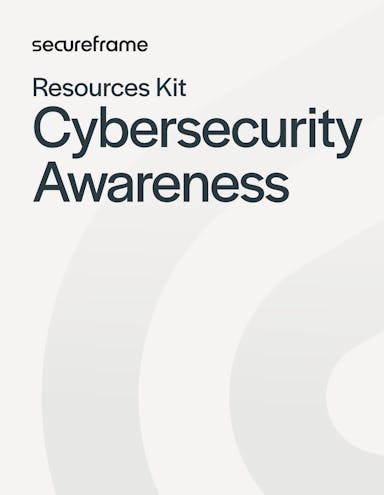
85+ Social Engineering Statistics to Know for 2026
Emily Bonnie
Senior Content Marketing Manager
Rob Gutierrez
Senior Cybersecurity and Compliance Manager, CISA, CCSK, CMMC RP
In the world of cybersecurity, the greatest threat isn't always a rogue piece of code or a system bug. It’s something much harder to remediate – the human element.
Unlike traditional cyber threats that seek to exploit system vulnerabilities, social engineering attacks bypass technical defenses by manipulating people into revealing confidential information or making security mistakes.
That's why understanding social engineering is so vital. It's not just about implementing the latest security controls; it's about recognizing the human vulnerabilities within our organizations and learning how to fortify them.
So let's delve deeper into the world of social engineering, understand the extent of the threat it poses with the latest social engineering statistics, and explore how organizations can guard against this formidable threat.
Recommended reading

The 13 Most Common Types of Social Engineering Attacks + How to Defend Against Them
Malware and ransomware statistics
1. Microsoft’s Digital Defense Report 2025 found ransomware and extortion drove over half of cyberattacks globally. (Microsoft)
2. 59% of organizations globally experienced a ransomware attack in 2024. (Statista)
3. Ransomware payments surged to a record high of $460 million in the first half of 2024. (Chainalysis)
4. 2024 saw the largest ransomware payment ever recorded — approximately $75 million paid to the Dark Angels ransomware group. (Chainalysis)
5. The median loss associated with ransomware and other extortion breaches was $46,000 in 2024. (Verizon)
6. The median ransom payment jumped from just under $200,000 in early 2023 to $1.5 million in mid-June 2024. (Chainalysis)
7. After experiencing a ransomware attack, roughly 46% of organizations worldwide paid a ransom to get their encrypted data back. (Statista)
8. 97% of companies were able to retrieve their data after a ransomware attack in 2023, with 70% relying on data backups. (Statista)
9. Ransomware payments dropped by 35.8% in 2024 compared to 2023, partly due to law enforcement actions. (Chainalysis)
10. Only 13% of victims paid the ransom in 2025, down from 16.3% in 2024, while 62% used immutable backups. (Hornetsecurity)
11. Roughly one-third of breaches (32%) in 2024 involved ransomware or another extortion technique. (Verizon)
12. 16.3% of ransomware victims paid the ransom to recover their data in 2024, compared to just 6.9% in 2023. (HornetSecurity)
13. 14% of ransomware victims reported their backup storage was also affected during the attack, either encrypted or rendered inaccessible. (HornetSecurity)
14. Over half of all ransomware incidents in 2024 originated from email and phishing attacks. (HornetSecurity)
15. Small organizations remain the most vulnerable to ransomware, with 55.8% of attacks targeting companies with 1-50 employees. (HornetSecurity)
16. Of the small businesses that were targeted by ransomware, 1 in 5 ended up paying the ransom to recover their data. Among those who did, 60% paid between $10,000 and $100,000 in ransom. (HornetSecurity)
17. Nearly 1 in 10 organizations do not know how their systems were infiltrated by ransomware, and 1 in 3 ransomware victims are unaware if any data was exfiltrated. (HornetSecurity)
18. 81% of organizations say they train their employees to recognize and flag potential ransomware attacks. (HornetSecurity)
19. 55% of organizations have purchased ransomware insurance policies. (HornetSecurity)
20. 40% of ransomware incidents involve the use of desktop sharing software and 35% involve the use of email. (Verizon)
21. Ransomware is currently considered the top cybersecurity concern for organizations, with over half of surveyed companies ranking it as their primary threat in 2024. (Arctic Wolf)
22. The healthcare, financial services, and information technology sectors are the most likely sectors to experience a ransomware attack. (FBI)
23. Ransomware breaches take an average of 326 days to contain — 49 days longer than the average data breach. (IBM)
24. The average cost of a ransomware attack — not including the cost of the ransom itself — is $4.54 million. (IBM)
25. The average cost of a ransomware breach is 13.1% higher for organizations that don’t pay the ransom. (IBM)
26. Email is the most common malware delivery method. (Verizon)
27. 450,000 new pieces of malware are registered by the AV-Test Institute every day. (AV-Test)
28. Experts estimate a ransomware attack on businesses occurs every 11 seconds. (Cybercrime Magazine)

Phishing statistics
29. Phishing was the most common breach vector in 2024, accounting for roughly 16% of breaches with an average cost of $4.88 million. (IBM)
30. Financial services and online payment platforms made up 30.9% of phishing targets, with millions of QR-code phishing emails sent. (APWG)
31. Phishing and pretexting are the leading social engineering actions against SMBs in 2025, with prompt-bombing attacks on the rise. (Verizon)
32. The Anti-Phishing Working Group (APWG) recorded 1,003,924 phishing attacks in Q1 2025 and 1,130,393 phishing attacks in Q2 2025, a 13% QoQ increase. (APWG)
33. Cofense reported its Phishing Defense Center analyzed an average of one malicious email every 42 seconds in 2024. (Cofense)
34. 94% of organizations faced phishing attacks in 2024, with 96% of successful incidents causing negative business impacts. (Egress)
35. Phishing-as-a-service (PhaaS) was behind 30% of credential attacks in 2024 and could reach 50% in 2025. (Barracuda)
36. The median time for users to fall for phishing emails is less 60 seconds. (Verizon)
37. The median time to click on a malicious link after the email is opened is 21 seconds, and then it takes only another 28 seconds to enter the data. (Verizon)
38. Phishing and pretexting via email account for 73% of all breaches. (Verizon)
39. An average 2.9% of employees click on phishing emails. (Verizon)
40. Phishing schemes were the number one crime type with 300,497 complaints. (FBI)
41. The average CEO receives 57 targeted phishing attacks every year. (Barracuda)
42. 43% of phishing attacks impersonate Microsoft brands. (Barracuda)
43. IT staff receive an average of 40 targeted phishing attacks every year. (Barracuda)
44. 95% of successful network intrusions rely on spear phishing techniques. (Security Intelligence)
45. Phishing impersonation attacks, where attackers pose as emails from a well-known brand or service to trick victims into clicking on a phishing link, make up 49% of all socially engineered threats. (Barracuda)
46. Only half of employees are able to correctly define spear phishing. (Proof Point)
47. 62% of organizations use a security awareness training program to reduce the likelihood of a successful phishing attack. (Arctic Wolf)
48. Phishing is the second most common cause of a breach and the costliest, with an average $4.91 million in breach costs. (IBM)
49. Most imitated brands in phishing attacks: Zscaler and Barracuda
-Microsoft
-WeTransfer
-DHL
-Google
-eFax
-DocuSign
-USPS
-Dropbox
-Xerox
-Facebook
-Amazon
-OneDrive
-PayPal
-Roblox
-WhatsApp
-Microsoft 365
-Adobe
-Fidelity

Business email compromise statistics
60. Wire-transfer BEC scams increased by 33% in Q2 2025 compared to Q1. (APWG)
61. The FBI’s IC3 logged 21,442 BEC complaints in 2024, with reported losses exceeding $2.7 billion, making it the second-costliest cybercrime type. (FBI IC3)
62. Business Email Compromise (BEC) accounts for 24-25% of financially motivated attacks. (Verizon)
63. Cloudflare was the most popular domain registrar used by BEC scammers in Q1 2025. (Fortra)
64. FBI advisories estimate total exposed losses from BEC between 2013 and 2023 exceeded $55.4 billion globally. (FBI IC3)
65. The median monthly BEC volume in H1 2025 was up 54% compared to 2023, peaking at 20 attacks per 1,000 mailboxes in June 2024. (Abnormal Security)
66. 1 in 10 social engineering attacks are business email compromise (BEC) attacks. (Barracuda)
67. 77% of BEC attacks target employees outside of finance and executive roles. 1 in 5 BEC attacks target sales employees. (Barracuda)
68. Business email compromise (BEC) attacks account for 6% of all breaches with an average cost of $4.89 million. (IBM)
Protect against social engineers and cybercriminals
Social engineering works because it preys on human behavior — urgency, curiosity, or trust — and those instincts don’t disappear with firewalls or endpoint security. That’s why preparation is your strongest defense. Training people to spot red flags, building response muscle memory through simulations, and making security part of daily culture helps ensure that when a real attempt happens, your team reacts instinctively and correctly.
And preparation isn’t just about awareness; it’s about equipping your workforce with the right resources. From playbooks and phishing test templates to risk assessment checklists, the tools you provide can mean the difference between a stopped attack and a costly breach.
To make preparation easier, we’ve put together a downloadable cybersecurity awareness kit that includes templates, checklists, and training resources designed to help teams build strong security practices and respond to cyberthreats. Use it to jump-start your internal awareness program, reinforce what employees learn in training, and give your organization a playbook for handling real-world scenarios before they happen.

Cybersecurity Awareness Kit
Building a strong cybersecurity program can feel overwhelming, especially for growing teams with limited time and resources. This free Cybersecurity Awareness Kit brings together essential tools so you can train employees, test your defenses, and improve resilience.
FAQs
What percentage of attacks are social engineering?
Social engineering accounts for approximately 70-90% of cyberattacks, with phishing being the most prevalent method.
What are the most common social engineering attacks?
The most common social engineering attacks include phishing, spear phishing, pretexting, baiting, and tailgating.
Which category of social engineering is the most common?
Phishing is the most common category, as it is widely used to trick individuals into providing sensitive information or downloading malware.
Is social engineering increasing?
Yes, social engineering attacks are increasing, fueled by the widespread use of digital communication platforms and attackers' evolving tactics.
What is the best defense against social engineering attacks?
The best defense includes employee training, multi-factor authentication (MFA), email filtering tools, and clear security policies.
How much money is lost due to social engineering?
The average cost of a social engineering attack is $130,000.

Emily Bonnie
Senior Content Marketing Manager
Emily Bonnie is a seasoned digital marketing strategist with over ten years of experience creating content that attracts, engages, and converts for leading SaaS companies. At Secureframe, she helps demystify complex governance, risk, and compliance (GRC) topics, turning technical frameworks and regulations into accessible, actionable guidance. Her work aims to empower organizations of all sizes to strengthen their security posture, streamline compliance, and build lasting trust with customers.

Rob Gutierrez
Senior Cybersecurity and Compliance Manager, CISA, CCSK, CMMC RP
Rob Gutierrez is an information security leader with nearly a decade of experience in GRC, IT audit, cybersecurity, FedRAMP, cloud, and supply chain assessments. As a former auditor and security consultant, Rob performed and managed CMMC, FedRAMP, FISMA, and other security and regulatory audits. At Secureframe, he’s helped hundreds of customers achieve compliance with federal and commercial frameworks, including NIST 800-171, NIST 800-53, FedRAMP, CMMC, SOC 2, and ISO 27001.

What are social engineering attacks?
Social engineering is a method used by cybercriminals that involves tricking people into sharing confidential information such as passwords and credit card numbers, or access to their computer systems where they install malicious software. Instead of breaking into a system directly, social engineers manipulate people into making security mistakes or giving away sensitive information.
The trust we place in others, our desire to be helpful, and even our fears are all vulnerabilities that cybercriminals eagerly exploit. They don't need advanced hacking skills if they can simply trick an employee into clicking a malicious link or revealing a password.
Social engineering is among the most common types of cyberattacks used by bad actors to exploit an organization — and attacks are growing more sophisticated. Social engineers are using increasingly personalized tactics to gain trust and avoid suspicion. Voice cloning and deepfake technology make it possible for threat actors to impersonate their targets in even more convincing ways. In one high-profile instance, the AI-created voice of a bank director was used to trick a bank manager into transferring $35 million to threat actors.
Social engineering attacks are an especially dangerous threat to organizations specifically because of the human element. Mistakes made by legitimate users are more difficult to detect, predict, and remediate. In many cases, victims don’t even realize they’ve been tricked.
Most common types of social engineering attacks